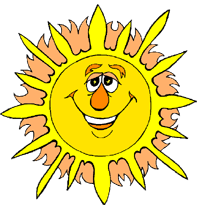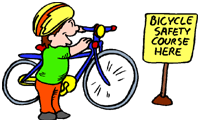Summer Safety Unit
Unit Overview:
It is important that students know some of the basic fundamentals of safety.

In this unit students will explore a variety of topics related to keeping themselves safe when they are at home and outside. We will discuss bike safety, proper use of helmets, car safety, and how to make good choices when playing outside. Students will also learn about the proper use of the 911 emergency calling system and how to use it in an emergency. Students will learn about how to make good choices when approached by a stranger and be given the tools to keep themselves from becoming harmed.
Unit Lessons:
Day 1: Bicycle Safety
- Discuss about wearing safety helmets and how to make sure your helmet fits correctly.
- Test your bike helmet. Be sure your child is wearing a proper helmet when riding a bike, scooter, skateboard, or skates.
- Discuss rules for riding your bike.
- If weather permits, go on a bike ride to practice bicycle safety.
Day 2: Car & Street Safety
- Discuss safety in the car and on the street (sidewalks, driveways, parking lots, and crosswalks).
- Discuss rules for driving in a car (use seat belts, talk in small voices, and don't distract the driver). Role play some situations and discuss what is appropriate behavior and not.
- Use the traffic sign website to review/teach your child what the traffic signals mean and discuss why they need to know these, even though they don't yet drive a car.
- Additional activity: Print out or draw traffic signs. Then set up chairs and do a role play driving exercise using those street signs.
- Discuss safety for train tracks.
- Print out and complete the Safety Rules page.
- If weather allows, take a walk together and discuss traffic signs you see. Practice crossing streets and parking lots safely.
Day 3: Home Safety & 911
- Discuss home safety and when to call 911.
- Give your child 5 minutes to come up with a list of things that could cause safety problems at home (candles burning, matches, toys on stairs, someone choking, kitchen hazards...) and share their ideas.
- Watch the 911 Adventure video. Use the 911 for kids website to help lead the discussion about 911.
- Role play when to call 911.
- Role play how to call 911.
- Talk about an emergency escape plan and safe meeting area for your house and have a practice drill.
Day 4: Stranger Safety
- Assess for prior knowledge about stranger safety.
- Discuss what to do if approached by a stranger.
- Role play a few situations and have your child tell you why it was dangerous and how to avoid/remove yourself from that situation.
- Come up with a Code Word to use for identification when an unknown person must be sent to pick up your child.
Day 5: Summer Time Fun Safety
- Discuss the importance of sunscreen, proper clothing, and hydration while outside.
- Pretend to pack for a day hike with your family. What should you pack? You may want to actually pack a backpack with the important items to reinforce the concept.
Additional Resources:
Here is a list of websites for Learning Coaches that focus on Summer safety topics:
EduPlace (Wacky Web Tale)

